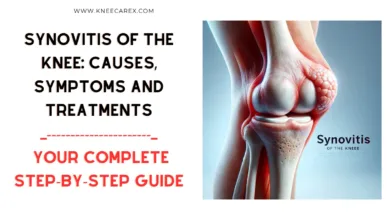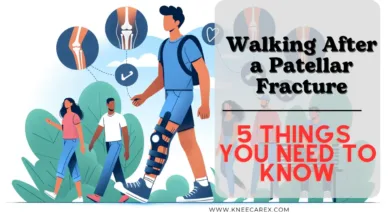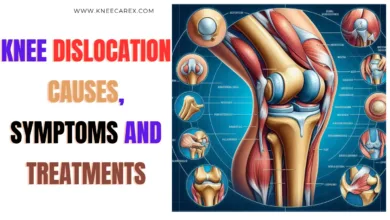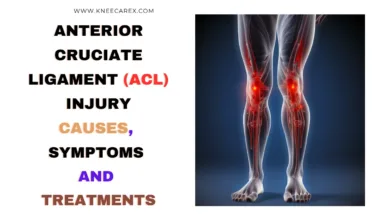Patellar Tendonitis (Jumper’s Knee): Causes, Symptoms and Treatments

Are you an athlete or fitness enthusiast who loves to jump, run, and push your physical limits? If so, you may have experienced the frustrating pain and stiffness of patellar tendonitis, also known as jumper’s knee. This common overuse injury can wreak havoc on your performance and sideline you from the activities you love. But fear not! In this article, we will delve into the ins and outs of patellar tendonitis—its causes, symptoms, treatment options, and most importantly, how to prevent it from sabotaging your athletic endeavors.
Contents
- 1 Understanding Patellar Tendonitis (Jumper’s Knee)
- 2 Anatomy of the Patellar Tendon
- 3 Causes and Risk Factors of Patellar Tendonitis
- 4 Common Symptoms of Jumper’s Knee
- 5 Diagnosing Patellar Tendonitis
- 6 Conservative Treatments for Jumper’s Knee
- 7 Surgical Options for Severe Cases
- 8 FAQ’s
- 8.1 How do you fix jumper’s knee patellar tendonitis?
- 8.2 Is jumping knee the same as patellar tendonitis?
- 8.3 Does a jumper’s knee ever go away?
- 8.4 Is it OK to walk with a jumper’s knee?
- 8.5 What is the fastest way to heal patellar tendonitis?
- 8.6 Does patellar tendonitis go away?
- 8.7 What does patellar tendonitis feel like?
- 8.8 Can I walk with patellar tendonitis?
- 8.9 What is the fastest way to heal patellar tendonitis?
- 8.10 What exercises are good for patellar tendonitis?
- 8.11 Can I do squats with patellar tendonitis?
- 8.12 Can I lift weights with patellar tendinitis?
- 9 Conclusion: Patellar Tendonitis (Jumper’s Knee)
Understanding Patellar Tendonitis (Jumper’s Knee)

It’s important to understand that addressing this condition requires more than just rest and ice. While these approaches can provide temporary relief, a comprehensive treatment plan should also include strengthening exercises for the quadriceps and hamstring muscles to support the knee joint better and reduce strain on the patellar tendon. Additionally, considering biomechanical factors such as foot pronation or muscle imbalances can be crucial in developing an effective long-term management strategy for patellar tendonitis.
Anatomy of the Patellar Tendon
The patellar tendon, also known as the kneecap tendon, is a crucial structure that connects the patella (kneecap) to the tibia bone in the lower leg. It plays a key role in the extension of the leg and is essential for activities such as jumping, running, and kicking. Composed primarily of type 1 collagen fibers arranged in parallel bundles, this tendon exhibits high tensile strength and resilience to withstand forces exerted during physical activities.
An interesting aspect of the patellar tendon’s anatomy is its unique blood supply. Unlike many tendons that receive blood from their surrounding tissues, the patellar tendon has limited vascularization, making it more susceptible to degenerative changes and slower healing responses when injured. This lack of adequate blood flow can contribute to prolonged recovery times for conditions such as patellar tendonitis, emphasizing the need for proper management strategies that target both mechanical loading and blood flow stimulation. Understanding these intricate anatomical details can provide valuable insights into optimizing treatment approaches for maintaining optimal knee health.
Causes and Risk Factors of Patellar Tendonitis
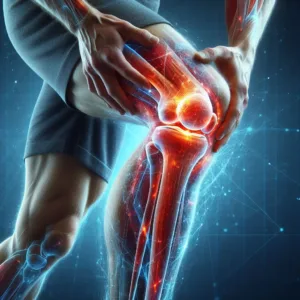
Overall, recognizing the impact of overuse and specific risk factors sheds light on why patellar tendonitis commonly occurs in athletes and active individuals. By addressing these underlying causes effectively through proper training techniques and targeted preventive measures, there is potential for reducing the incidence of this debilitating condition. Making informed choices about physical activities helps promote long-term knee health for those at risk of developing patellar tendonitis.
Common Symptoms of Jumper’s Knee
Recognizing the symptoms of jumper’s knee is crucial for early intervention and treatment. While pain just below the kneecap during physical activity is a hallmark sign, it is essential to note that this discomfort can intensify over time, even interfering with daily activities such as walking or climbing stairs. Additionally, some individuals may experience swelling and tenderness around the patellar tendon area, indicating inflammation and potential damage.
Moreover, it’s important to acknowledge that not all symptoms manifest in the same way for everyone. Some individuals may notice stiffness in their knees, especially after periods of rest or inactivity, which can impact overall mobility and athletic performance. Understanding these nuanced manifestations of jumper’s knee highlights the importance of seeking personalized care and treatment strategies tailored to individual needs.
Diagnosing Patellar Tendonitis
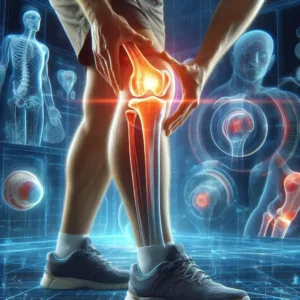
One interesting consideration in diagnosing patellar tendonitis is differentiating it from other similar conditions, such as patellofemoral pain syndrome. Accurate diagnosis can be challenging due to overlapping symptoms, so clinical expertise and thorough evaluation are vital for distinguishing between these conditions. By comprehensively examining these aspects, healthcare professionals can optimize patient care and address patellar tendonitis effectively.
Conservative Treatments for Jumper’s Knee
In the realm of conservative treatments for Jumper’s Knee, a variety of options exist to address this common overuse injury. One primary approach involves rest and activity modification. Reducing impact through activities like jumping or running can provide the tendon with much-needed relief, allowing it to heal and recover.
These conservative methods offer promising avenues for individuals seeking non-invasive treatment options for Jumper’s Knee, emphasizing the value of a comprehensive approach that addresses both symptom management and long-term prevention. By understanding and implementing these strategies effectively, patients can optimize their recovery process and regain strength and functionality in their knees.
Surgical Options for Severe Cases

For cases where other treatments have been unsuccessful, patellar tendon debridement may be recommended. This involves removing damaged or degenerated tissue from the patellar tendon, allowing healthy tissue to regenerate. While surgery is generally reserved for severe or chronic cases, it can provide significant relief and improve long-term outcomes for those struggling with the debilitating effects of patellar tendonitis.
FAQ’s
How do you fix jumper’s knee patellar tendonitis?
Patellar tendonitis, commonly known as jumper’s knee, can be a frustrating and painful condition for athletes and active individuals. To effectively address this issue, it’s essential to understand the root cause of the problem. In addition to rest and icing, a key component of treating patellar tendonitis is strengthening the surrounding muscles. This not only helps to relieve stress on the tendon but also promotes better alignment and support for the knee joint during movement.
Is jumping knee the same as patellar tendonitis?
The jumping knee, also known as patellar tendonitis or jumper’s knee, and patellar tendinitis are closely related but not the same. The jumping knee is a condition that affects the patellar tendon, causing pain and stiffness in the front of the knee, particularly with activities such as jumping or running. On the other hand, patellar tendinitis specifically refers to inflammation of the patellar tendon due to overuse or repetitive stress.
Does a jumper’s knee ever go away?
The question of whether a jumper’s knee ever goes away is a common concern for those suffering from patellar tendonitis. The good news is that with proper treatment and rehabilitation, many individuals experience significant improvement in their symptoms over time. However, it’s important to note that a complete recovery may take longer for some people, especially if the condition has progressed to a more severe stage.
Is it OK to walk with a jumper’s knee?
While it may be tempting to push through the pain and continue walking with a jumper’s knee, it is important to consider the potential consequences. Walking with a jumper’s knee can not only exacerbate the existing injury but also lead to further damage to the patellar tendon. The strain placed on the tendon during walking can impede its ability to heal properly, prolonging recovery time and increasing the risk of developing chronic knee problems.
What is the fastest way to heal patellar tendonitis?
Patellar tendonitis, or jumper’s knee, can be treated by incorporating targeted exercises, rest, and activity modification. Strengthening surrounding muscles, avoiding high-impact movements, and using ice therapy and anti-inflammatory medications under medical guidance can accelerate the healing process. Combining these strategies with professional medical advice can significantly accelerate the healing process.
Does patellar tendonitis go away?
Patellar tendonitis, also known as jumper’s knee, is a common overuse injury that affects the patellar tendon connecting the kneecap to the shinbone. Many individuals wonder whether this condition goes away on its own, and the answer is not straightforward. In some cases, patellar tendonitis can be resolved with rest, ice, and proper rehabilitation exercises. However, for others, especially those with severe or chronic cases, the condition may persist unless actively treated.
What does patellar tendonitis feel like?
Patellar tendonitis is a common but debilitating condition affecting athletes and active individuals. It causes intense, persistent pain below the kneecap, affecting daily activities like walking or running. As the condition progresses, the pain intensifies with each joint bend or extension, causing discomfort and causing difficulty in flexing. Many seek effective treatment options to alleviate symptoms and regain mobility.
Can I walk with patellar tendonitis?
It’s a question many people with patellar tendonitis, also known as jumper’s knee, may ask: Can I walk with this condition? While it’s natural to be concerned about exacerbating the pain and inflammation, walking is a beneficial form of exercise for those with patellar tendonitis. Walking helps to maintain joint mobility and strength, promotes blood flow to the affected area, and can aid in the healing process. However, it is important to use caution and moderation when walking with patellar tendonitis, as overexertion or improper technique can worsen the condition.
What is the fastest way to heal patellar tendonitis?
The fastest way to heal patellar tendonitis involves a multi-faceted approach that focuses on reducing inflammation, strengthening the muscles around the knee, and modifying activities to reduce stress on the tendon. Incorporating rest and ice therapy to alleviate pain and swelling is a crucial initial step in the healing process. Additionally, engaging in specific exercises targeting the quadriceps, hamstrings, and glutes can play a significant role in rehabilitating the affected area.
What exercises are good for patellar tendonitis?
To manage patellar tendonitis, incorporate exercises that promote healing and strength, such as eccentric squats and single-leg decline squats. These exercises stimulate collagen production and improve tendon resilience. Balance and stability training, such as using a wobble board or single-leg balance exercises, can also help improve proprioception and reduce imbalances. A well-rounded exercise program can enhance recovery and prevent future flare-ups.
Can I do squats with patellar tendonitis?
I understand your concerns about whether you can do squats with patellar tendonitis. While it’s essential to listen to your body and consult a healthcare professional, there are potential modifications that may allow you to continue with your squatting routine. For instance, reducing the depth of the squat or using resistance bands for assistance can alleviate some pressure on the knees while still engaging the necessary muscles. Additionally, focusing on strengthening the surrounding muscles, such as the hamstrings and glutes, can help support and stabilize the knee joint during squats.
Can I lift weights with patellar tendinitis?
Lifting weights with patellar tendinitis can be a tricky situation, as it puts additional stress on the already injured tendon. However, completely avoiding weightlifting may only be necessary for some. It’s important to modify your workout routine by reducing the amount of weight used and avoiding exercises that directly strain the knee joint. Focus on strengthening the muscles surrounding the knee to provide better support and stability. This can include exercises such as hip thrusts, leg presses, and calf raises, which can still contribute to overall strength gains without aggravating the condition.
Conclusion: Patellar Tendonitis (Jumper’s Knee)
In conclusion, effectively managing patellar tendonitis requires a multi-faceted approach that addresses both the physical and lifestyle factors contributing to the condition. It’s crucial to understand that recovery from patellar tendonitis is not just about treating the symptoms but also about addressing the underlying causes, such as muscular imbalances, overuse, or poor biomechanics. Therefore, a comprehensive treatment plan should include targeted strengthening exercises for the quadriceps and hamstring muscles, along with flexibility training to improve the range of motion in the lower body.
